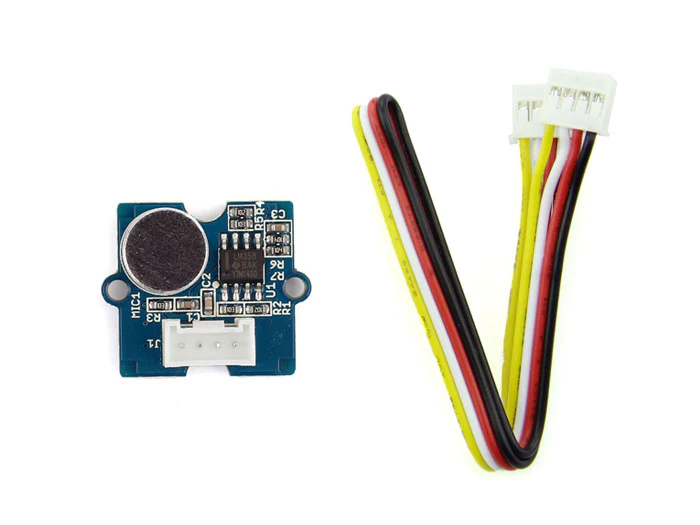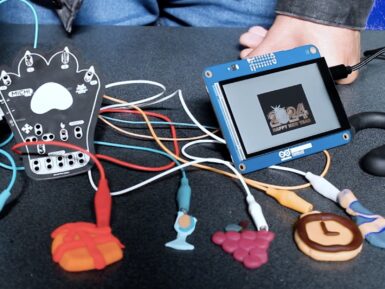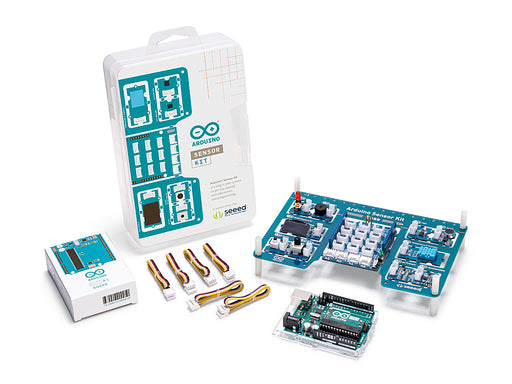
Overview
The main component of the module is a simple microphone, which is based on the LM386 amplifier and an electret microphone. This module’s output is analog and can be easily sampled and tested by an Arduino.
Features:
- Easy to use
- Provides analog output signal
- Easily integrates with Logic modules on the input side of Grove circuits
- Compatible with the Seed Grove System
Tech specs
|
Item |
Value |
|
Operating Voltage Range |
3.3/5 V |
|
Operating Current(Vcc=5V) |
4~5 mA |
|
Voltage Gain(V=6V, f=1kHz) |
26 dB |
|
Microphone sensitivity(1kHz) |
52-48 dB |
|
Microphone Impedance |
2.2k Ohm |
|
Microphone Frequency |
16-20 kHz |
|
Microphone S/N Radio |
54 dB |
Get Inspired

Display real-time meeting room availability, synchronized with Google Calendar through Arduino IoT Cloud.

Watching back a slideshow of some of your favorite times of the past years is a great way to reflect on what’s happened and get excited for the future. The Electronic Cats crew wanted to incorporate this concept into a more simplified, interactive form which resulted in the Garrita project. Garrita is a homemade platform that lets an Arduino GIGA R1 WiFi with GIGA Display Shield transform into a highly mobile slideshow thanks to its larger onboard memory capacity and convenient layout. This year, the Electronic Cats were able to take their image shifter concept even further with Michi: an existing project that turns any conductive object into a capacitive touch-sensing controller. Whenever one of Michi’s inputs are toggled, the board sends a signal to the GIGA R1 WiFi that causes the current slide to advance to the next one. In order to go from a locally stored image to something on the Display Shield, users first transform their images into a more suitable format via the LVGL conversion tool. Once downloaded, the resulting files can be easily bundled into a Sketch before they become accessible in the application code. To see more about how the Electronic Cats built Garrita, you can read their write-up here on Hackster.io.







